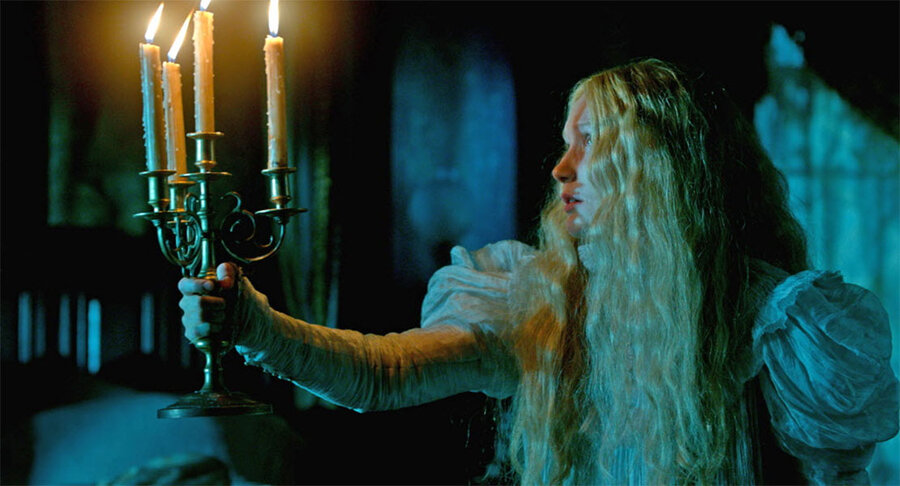'Crimson Peak': The designers of the movie are the film's true stars
Loading...
The most pressing threat in Guillermo del Toro's gothic horror "Crimson Peak" isn't the ooze-filled cauldrons of dead souls in the basement of the old Victorian mansion, nor the plotting, black-clad sister (Jessica Chastain), who serves a bitterly poisonous tea.
It's the ever-lurking possibility that, at any moment, the lush, ornate tapestry of Del Toro's film might swallow its performers whole.
"Crimson Peak" is so lovingly wrapped in the stylish trappings of the genre that it's one of the few movies you could say is worth it purely for the wallpaper.
It stars Mia Wasikowska, Tom Hiddleston, and Jessica Chastain – a fine trio of actors. But the film's true above-the-title artists are more properly cinematographer Dan Laustsen, production designer Thomas Sanders, and costume designer Kate Hawley, who under the lordly command of Del Toro, summon an atmosphere gaga with all things gothic.
"Crimson Peak" casts a spell that fails to hold, but it's unquestionably the work of a man who loves – I mean, really loves – movies.
It opens with a flashback and a promise from Edith Cushing (Wasikowska) that "ghosts are real." After the death of her mother, she (or at least a ghoulish ghostly of her) visits Edith with a frightful warning: "Beware of Crimson Peak." It's a message that curiously fails to impress.
The setting is turn-of-the-century Buffalo, where Edith lives with her father Carter Cushing (an excellent Jim Beaver). She wants to be a novelist, but her manuscript (a ghost story) is condescendingly rejected, praised only for feminine "loops" of her penmanship. Advised to write a love story, she pleads that the ghosts are a metaphor for the past.
Such is the tenor of Del Toro's fable, which he wrote with Matthew Robins. You wouldn't mistake it for Henry James or even for Hitchcock. The exquisite set design is more heightened than the emotions; the grotesques are too beautiful to be too deep.
From England, Thomas Sharpe (the splendid Tom Hiddleston) comes to town with his mysterious sister Lucille (Chastain), in search of a grant for a contraption of his invention to mine the red clay beneath their home. Cushing, an established business man, quickly rejects Thomas, but Edith doesn't.
The Sharpes have clearly duplicitous motives, but Edith swoons for Thomas. Just as they're departing Buffalo, Edith's father is killed.
Edith and Thomas wed and the trio returns to the remote Sharpe family manor in England, Allerdale Hall, where the movie moves into its more sedate, predictable house-of-horrors second half. A hole in the roof pours light and autumn leaves down the center, red clay bubbles beneath the floor boards, ghosts lurk in the closets, the bath runs blood red, and (horror of horrors) the kitchen could use granite counter tops. It's a fixer upper.
The rich atmosphere of "Crimson Peak" never wanes, but the story does. Having summoned the gothic ghosts, Del Toro never fully unleashes them. The director's dark fantasy masterpiece remains "Pan's Labyrinth," but his affection for gothic romance is infectious; hopefully he has a Dickens adaptation in him.
As even his last film, the kaiju monster movie "Pacific Rim," proved, there may be no better conjurer of color in movies right now. His dreams, and nightmares, are in technicolor.







